Go Next Level with Arpeggios!
Playing arpeggios is one of the first things to focus on when you learn to improvise. No matter what type of music you play or how complicated the chord progression is, understanding how to use arpeggios is crucial, but especially if you play jazz guitar.
Of course, knowing your scales is also essential, but to take your solos to the next level, you must use arpeggios effectively. In todays lesson, we learn all about arpeggios and how to use them in a standard 2-5-1 chord progression.
Let’s start with a quick review of arpeggios and the 2-5-1 chord progression. If you know this already, skip the review and go straight to the charts below.
For jazz riffs, scales, and similar arpeggio charts, check out my book: The Jazz Guitar Looper Pedal Book The Jazz Guitar Looper Pedal Book.
Arpeggio Primer
Arpeggios are the notes of a chord played separately instead of strumming all together like a chord. In other words, play the notes of a chord one at a time.
For example, the Dm7 chord consists of D-F-A-C. The arpeggios are the same notes (D-F-A-C) played separately. The only other difference is you can play these notes in any order.

For example, a three-note triad has 3x2x1=6 ways to play the arpeggio. A five-note chord/arpeggio has 5x4x3x2x1=120 ways to play it.
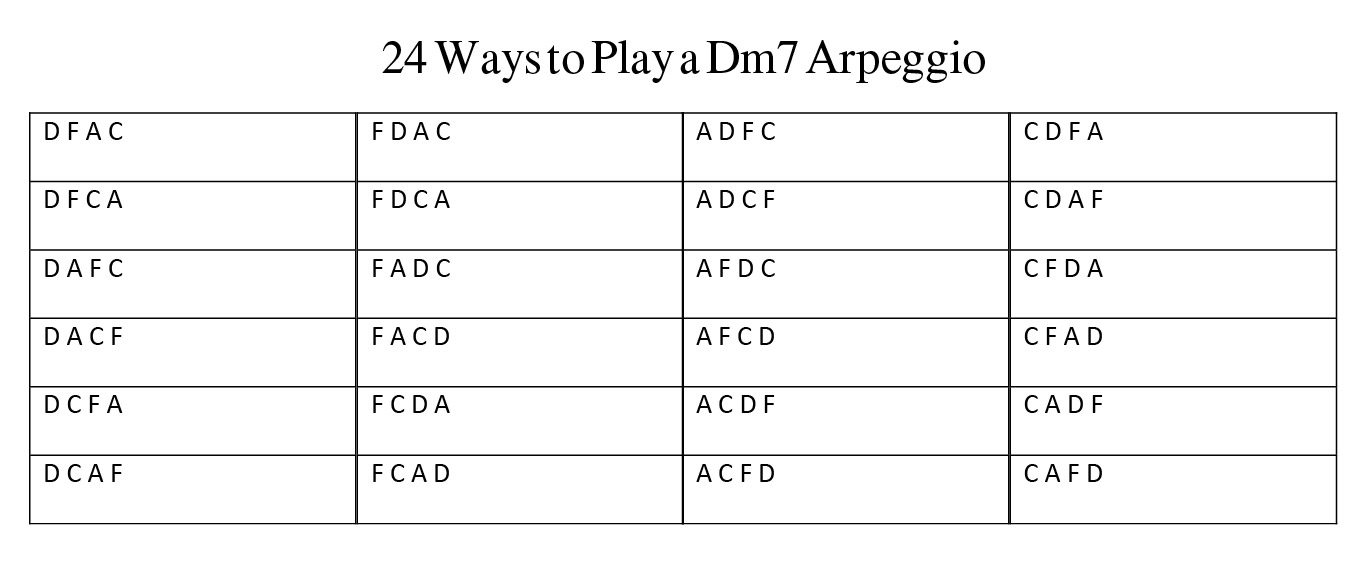
Arpeggio Note Spelling Chart
What is the 2-5-1 chord progression?
You have probably heard of the 2-5-1 chord progression if you play jazz, but it is also common in most popular styles of music. Often the 2-5-1 chord progression is written as ii-V-I with Roman numerals. Either way, each number of this three-chord pattern represents a chord, usually in a major or minor key.
In the key of C major, the chords in a 2-5-1 progression are Dm – G – C. However, in jazz, we use the extended chords of Dm7 – G7 – Cmaj7. The chords are taken from the C major scale. Here are the diatonic 7th chords from the C major scale with the explanation below:
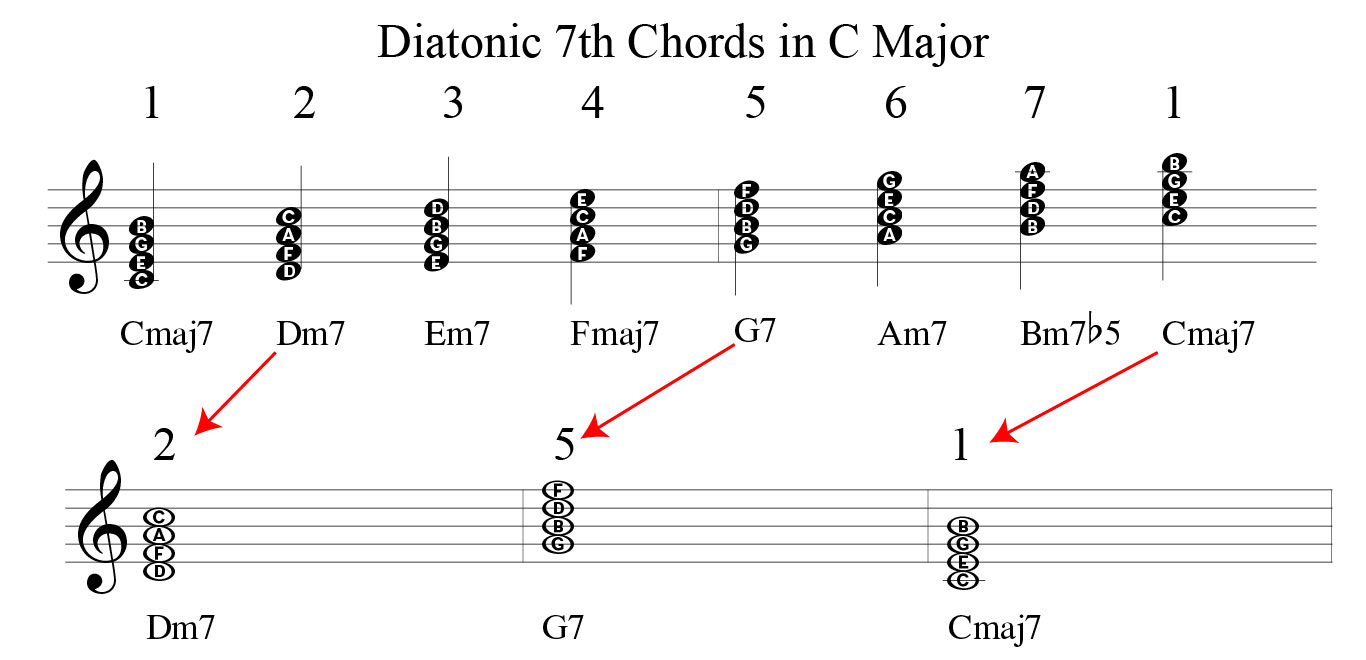
-
The 2 (iim7) chord:
This chord is built on the second scale degree of the major or minor scale. For example, in the key of C major, the two chords are D minor (D-F-A). In jazz, this is usually expanded to Dm7 or Dm9 in a major key or Dm7b5 in a minor key.
-
The 5 (V7) chord:
This chord is built on the fifth scale degree of the major scale. For example, in the key of C major, the V chord is G major (G-B-D). This chord is often played as a Dominant 7 (G7) in all styles of music. The 5 chord is generally the most altered chord in jazz playing. For example, G7b9, G7b5, G7#5, etc…
-
The I (Imaj7) chord
: This chord is built on the first scale degree of the major scale. For example, in the key of C major, the I chord is C major (C-E-G). In the minor key, it would be Cm7. This chord is often played as a Cmaj7 in jazz and popular music.
Now that you know what arpeggios and the 2-5-1 chord progression are, let’s move on to part two of the lesson.
Need more help with improvisation? Check out my 10 Tips for Improvising a Flawless Music Solo
Possible Arpeggios Over the 2-5-1 Chord Progression
The real art of using arpeggios in jazz guitar is to add a variety of tense and stable notes. This will add colour and depth to your solos. Arpeggios can be as complex as you want, but it’s advisable to declutter your thinking and keep it simple where possible. Work on one chord in the 2-5-1 at a time until you can anticipate the sound before you play. Here the arpeggio in your head or hum it out loud until it becomes second nature.
If you have a backing track or a looper pedal, take one chord at a time and go through the arpeggios for each chord. For example, loop four bars of the Dm7 chord and only work on the Dm7 arpeggios. Go through all the chords, then when you are ready, play the 2-5-1 audio track below.
This chart shows a partial list of arpeggios and scales to improvise over the ii-V-1 (Dm7 – G7alt-Cmaj7) progression in the key of C. Of course, each piece will have different requirements due to melody, harmonic function, and tension. Use this chart as a quick reference rather than a definitive guide. Remember, the V7 (G7) is often altered (b5, #5, b9, #9, b13).
Once familiar with each chord, loop a 2-5-1 (iim7-V7-Imaj7) in C. Let your ear determine what works rather than the theory. Here are some backing tracks to work through one chord at a time and the full 2-5-1:
Not sure how to use the chart above?
Pick an arpeggio under the Dm7 column, then pick an arpeggio under the G7 column. Finally, pick an arpeggio under the Cmaj7 column.
Loop or use the 2-5-1 audio backing track above and play the arpeggio for each chord. If you are new to this record each chord for four bars so you can get all the notes in the arpeggio in. You can apply the 24 patterns at the start of this lesson for variety. Once this exercise feels comfortable shorten the length of the chords to two bars of each chord and eventually one bar of each chord.
Mastering Arpeggios
Jazz improvisation requires years of practice to develop your own jazz vocabulary. Start slow and always follow your intuition. Remember the theory is a means to an end!
For more music tips, check out my blogs here. For more guitar books, check here. Leave any suggestions or comments for future lessons below.
Jazz Guitar Looper Pedal Book
NEW RELEASE NOW AVAILABLE!
In The Jazz Guitar Looper Pedal Book, much time was taken to add essential looper techniques, theory, reference charts, riffs, chords, scales, arpeggios, tips, and more. So, this book is great for your looper and for learning and improving your jazz playing in general.
• Practice jazz guitar with the aid of a looper pedal.
• Learn how to create layered loops step by step.
• Hundreds of riffs and essential theory tips.
• Technique, scales, chords and valuable charts.
• Extensive accompanying audio and video online.
• Jam-packed book with 221 pages.
The Blues Guitar Looper Pedal Book
In the Blues Guitar Looper Pedal Book, you will learn how to use your guitar looper pedal and play the blues like a pro. The looper pedal is an excellent companion for any blues guitarist. Master essential looping techniques while your improve your blues guitar playing.
The Pop Rock Guitar Looper Pedal Book
Learn how to use your looper pedal and improve your pop & rock guitar playing in the Pop Rock Guitar Looper Pedal Book.30 practice loops from 2 to 16 bars divided into 5 separate parts: riffs, bass, chords, rhythm, and an extra optional part. Also, instructional materials on looping and improvising tips, pop & rock chord progressions, scales & fingerboard charts. 168 pages.
How to Use Your Guitar Looper Pedal to Play Pop Rock Music
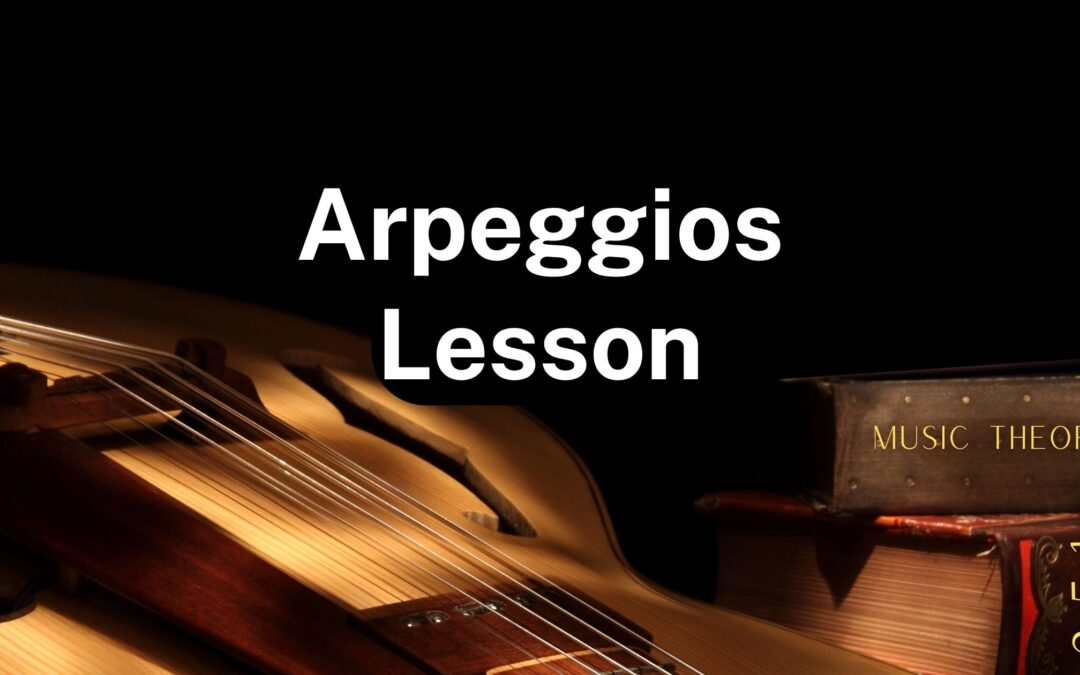
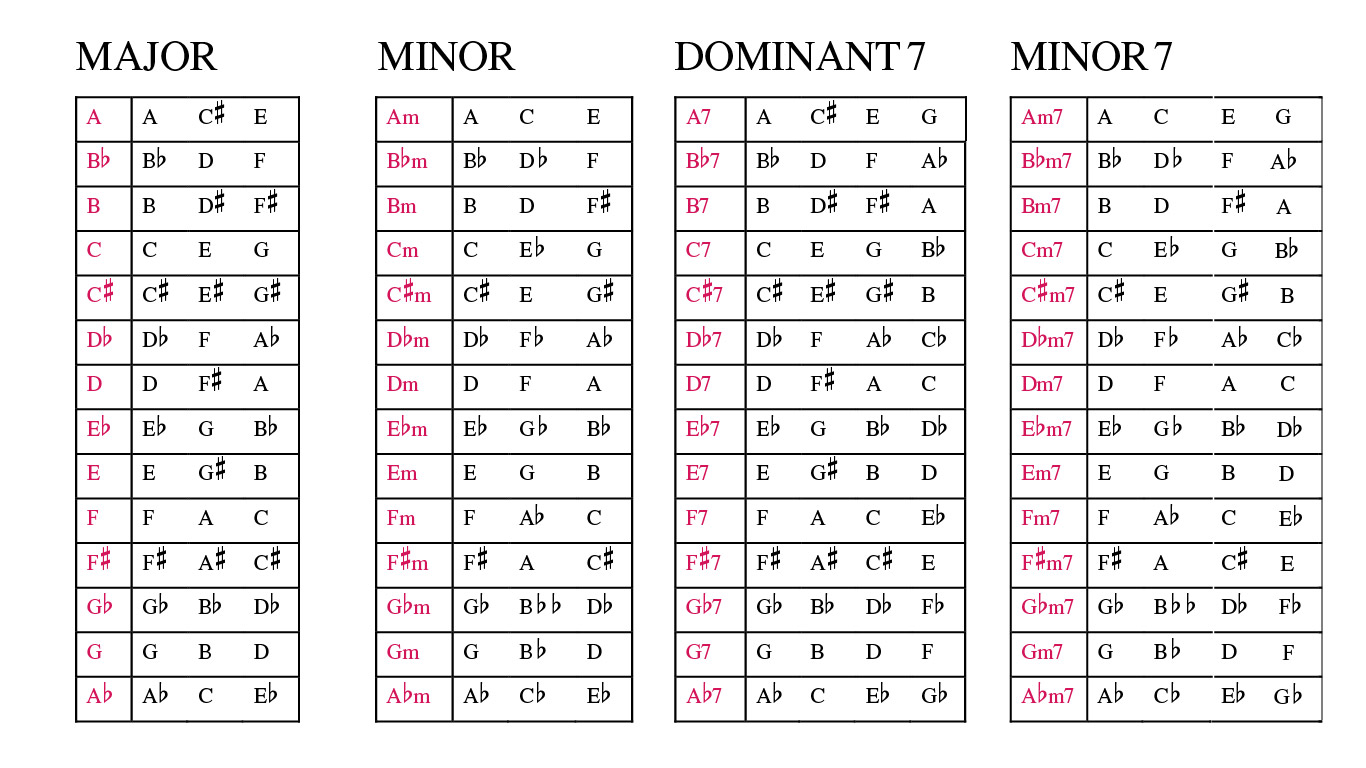
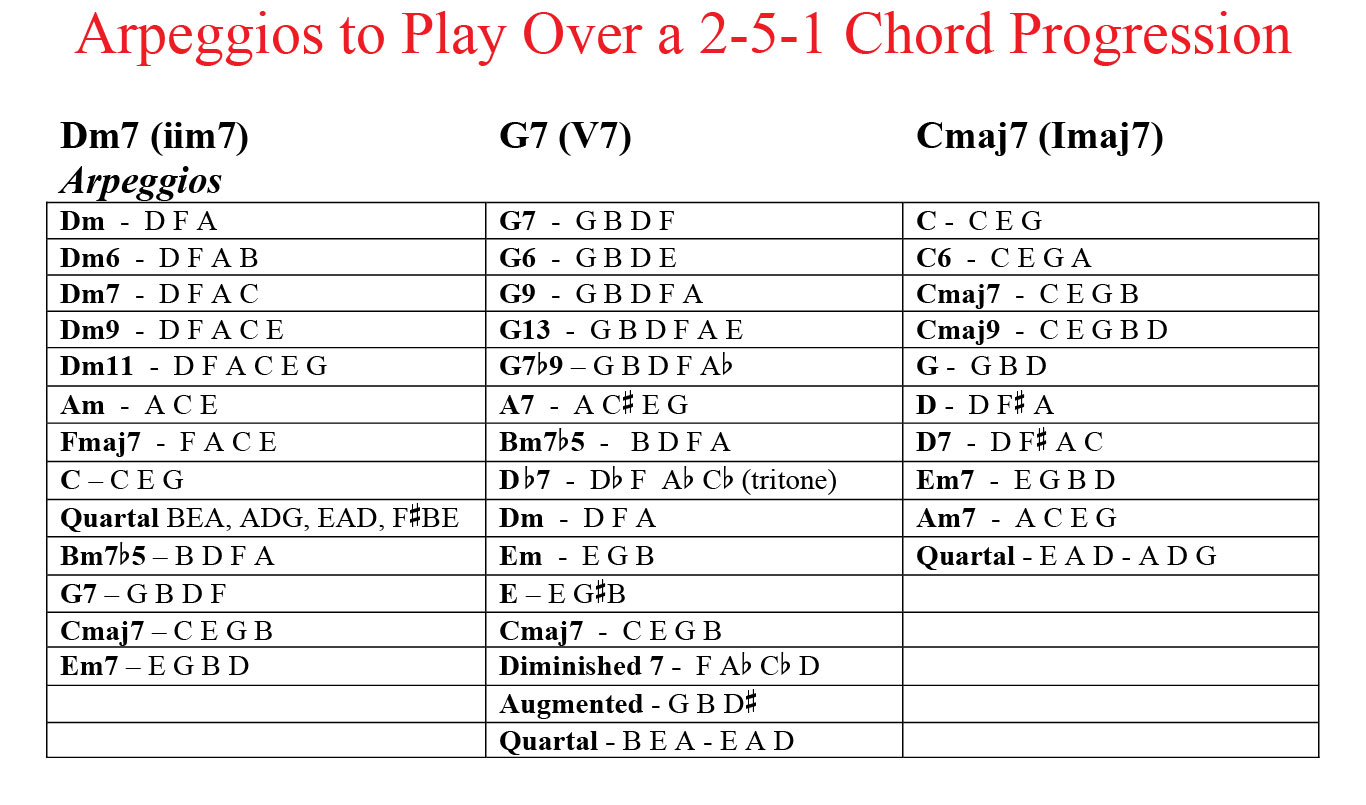

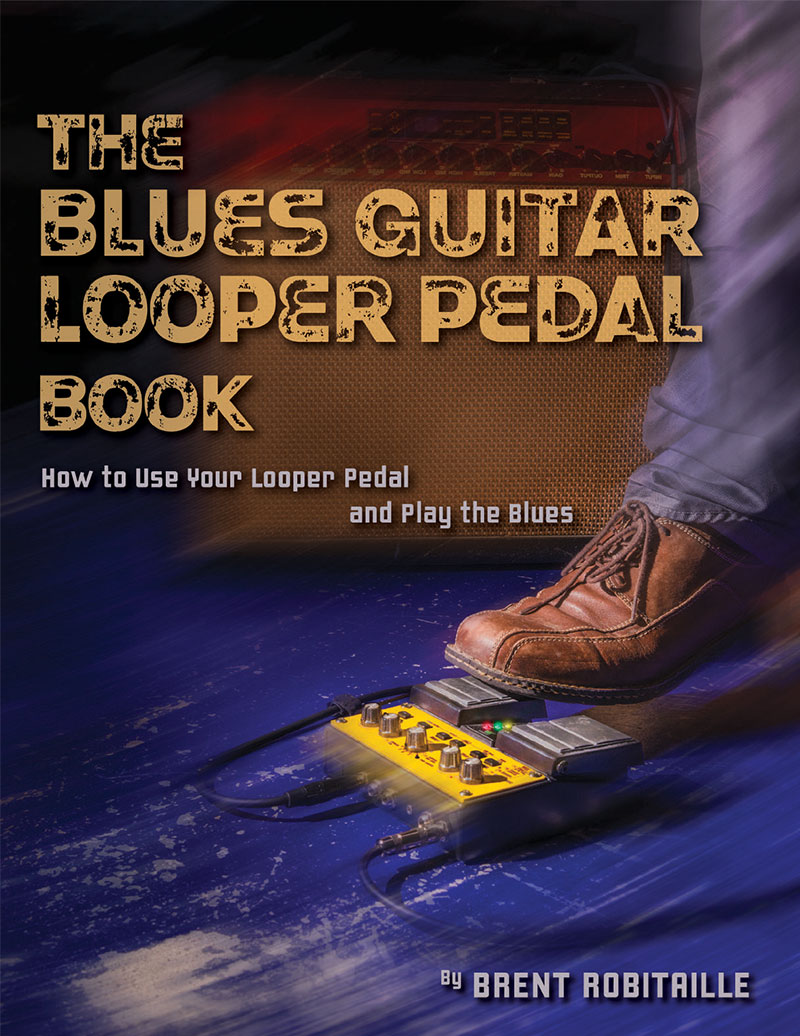

Recent Comments